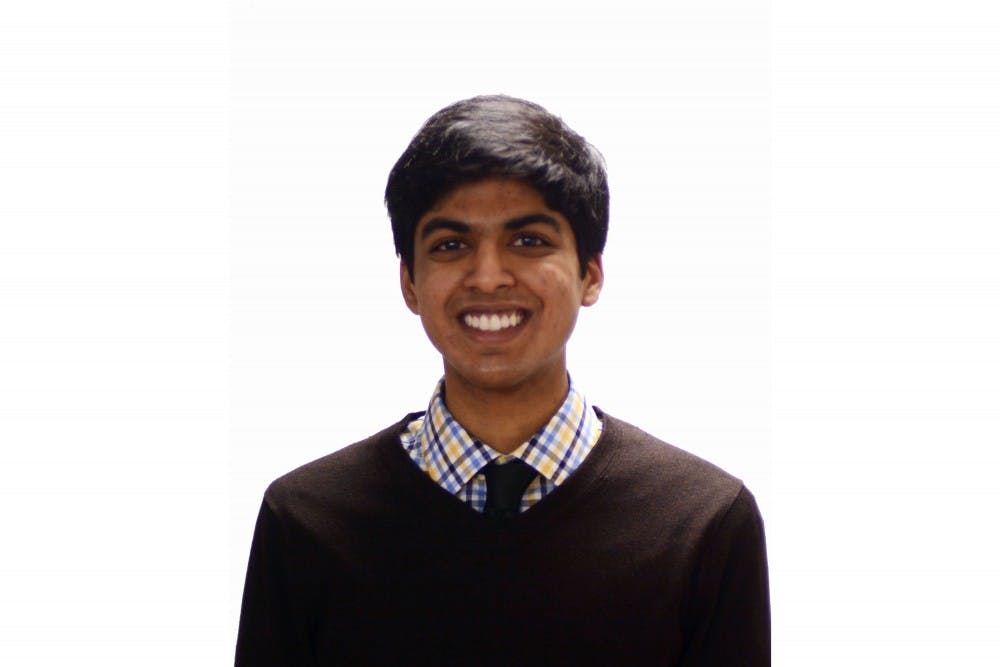The incredibly strong social media support for Ahmed Mohamed may seem like an indication of a changing tide in United States attitudes toward Muslims, but the handcuffing itself is evident of an entrenched Islamophobia that will take many decades to heal.
Amber Haque, an associate professor of psychology in the United Arab Emirates, wrote in 2004 that Islamophobia is based on “the main misconception ... that [Islam] is a religion of violence, including the belief that Muslims are terrorists and that Islam is anti-American ... that Islam is a religion of the Arabs, although many immigrants from Eastern Europe, Russia and China are also Muslims.”
James Taranto, an opinion columnist for The Wall Street Journal, wrote in response to the hashtag #IStandwithAhmed on social media that the idea of Islamophobia is a “pernicious myth” and uses as evidence the effects of the “zero tolerance” policy for weapons, in which a number of incidents similar to Ahmed Mohamed occurred with white American middle-school students both before and after 9/11. Taranto also claims that the “myth of Islamophobia” is based off of “ignorant stereotypes,” since it discards the idea that Muslims in the U.S. can be white.
The Muslim-American population is extraordinarily diverse, but by no means should we entertain Taranto’s problematic idea that Islamophobia is a media-invented myth designed to sensationalize the experiences both of racial minorities and people of color and also of Muslim Americans. Taranto goes on to pose the following question he deems rhetorical: “ ... [W]hat happened to Ahmed was a genuine outrage even apart from the dubious claims of ‘Islamophobia’ or racism. But is it too much to ask that journalists report the facts and refrain from spinning baseless narratives?”
Unfortunately, the narratives of Islamophobia and racism can hardly be considered baseless. For instance, tolerance at Penn — for any minority — is extremely superficial, because being Ivy League students does not insulate us from prejudices that grip the entire country. As recently as five months ago, the Vietnamese Students Association alleged to have experienced a hate crime during Spring Fling. Interminority conflict is often harder to understand than conflicts between whites and minorities, yet they exist due to structural and societal understandings of how minorities relate to each other and how they may differ.
Alex*, a Muslim-American student who identifies as South Asian, vehemently replied “yes” when I asked him if Islamophobia exists at Penn and whether he had been a victim of it. While he didn’t elaborate on the experience, he claimed that “Islamaphobia is a blood relative of xenophobia. It’s a xenophobia of the mind and philosophy. But it is also deeply tied to xenophobia in general, although [Islam] is the most racially diverse religion in the U.S. and world.” He also seemed unsurprised by the idea that the Ahmed Mohamed arrest was a reality in 2015 when many Americans claim the country to be in a post-racial state.
Jake*, another Muslim-American student, claims that 100 students, faculty and staff show up for Muslim Students Association Friday services each week. The actual number of Muslims on campus may be larger, but the community is relatively small compared to the Penn student population and thus is close-knit and self-reliant for support.
My understanding of Islamophobia and the discrimination it engenders is that it is almost solely based on visible markers of “Muslimness,” which mostly include apparel, skin color and personal grooming. Additionally, most of the South Asians and Muslim Americans I interviewed who declined to be quoted in this article claimed that current events in the West Bank inevitably serve as a backdrop for the perception of Muslims in the U.S. and especially at Penn, where many Muslims lead a politically charged existence.
While I would love to have been offered an internship at Twitter and invited to the White House by the president himself, I would not want to have gone through Ahmed Mohamed’s experience of having been handcuffed and suspended from school for three days. The fact remains that most victims of Islamophobia are not afforded the attention of the founder of Facebook or the president of the United States. For every Ahmed who is vindicated, there are many others who are not and will continue to be unfairly treated until stereotyping of Muslim Americans ceases to exist.
*Individual’s name was changed upon request for privacy.
RAVI JAIN is a College junior from Syosset, N.Y., studying economics. His email address is jainravi@sas.upenn.edu. “Tall, Skinny, Mocha” appears every other Tuesday.
The Daily Pennsylvanian is an independent, student-run newspaper. Please consider making a donation to support the coverage that shapes the University. Your generosity ensures a future of strong journalism at Penn.
DonatePlease note All comments are eligible for publication in The Daily Pennsylvanian.





